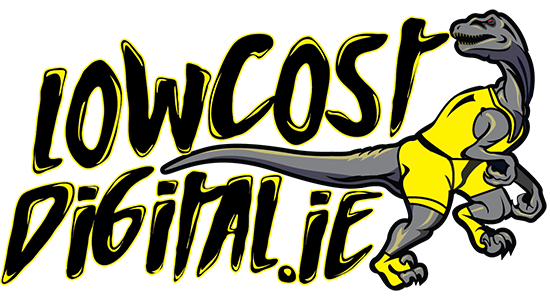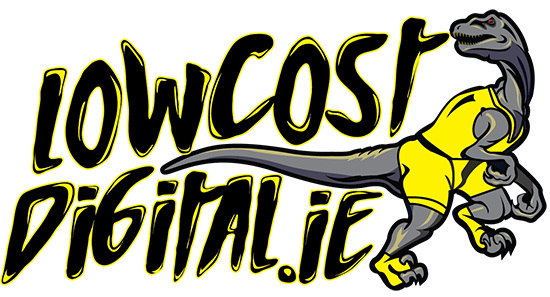Key Highlights
- A website structure is the way a’s content and pages are organized and interconnected, and plays a crucial role in improving user experience and search engine ranking.
- There are four types of website architectures: hierarchical, sequential, matrix, and database, each with its own advantages and best use cases.
- Website structure should be the first step in any web design project, and involves considerations such as user journey, content, and context.
- Key elements of website structure include the homepage structure, navigation and menu design considerations, categories and subcategories, and effective tagging and categorization.
- Best practices in web design layout involve utilizing grid systems and hierarchies, and paying attention to white space and visual balance.
- Web design organization enhances user experience through strategies such as simplifying user navigation and improving page load times.
- SEO optimization in web design organization involves structuring content for better search engine visibility and leveraging internal linking strategies.
- A case study of a web design project showcases the importance of website organization strategies and provides key lessons and takeaways.
- Common mistakes in web design organization include overcomplication and clutter, and neglecting mobile responsiveness.
- Future trends in web design organization include the role of AI and machine learning, and considerations between adaptive and responsive design.
Introduction
Web design plays a crucial role in creating an impactful online presence for businesses and individuals alike. A well-designed website not only captures attention but also provides a seamless user experience. One important aspect of web design that often gets overlooked is website organization. The way a website’s content and pages are organized and interconnected can greatly impact user experience, search engine ranking, and overall success.
In this ultimate guide to web design organization, we will explore the concept of website structure and its importance in creating effective and user-friendly websites. We will delve into the different types of website structures, such as hierarchical, sequential, matrix, and database, and discuss how to choose the best structure for your project. We will also explore the essential elements of web design organization, including navigation and menu design considerations, categories and subcategories, and effective tagging and categorization.
Furthermore, we will delve into best practices in web design layout, such as utilizing grid systems and hierarchies, and paying attention to white space and visual balance. We will also explore how web design organization enhances user experience through strategies such as simplifying user navigation and improving page load times. Additionally, we will discuss SEO optimization in web design organization, including structuring content for better search engine visibility and leveraging internal linking strategies.
Throughout this guide, we will provide real-life examples, case studies, and practical tips to help you effectively organize your website and create a compelling online presence. www.lowcostdigital.ie
Understanding Web Design Organization
Web design organization refers to the way a website’s content and pages are organized and interconnected. It involves the hierarchical arrangement of web pages and their relationships to one another. The goal of web design organization is to create a logical and intuitive structure that allows users to easily navigate and find the information they are looking for. A well-organized website not only improves user experience but also enhances search engine optimization and supports the overall design process. By understanding the concept of web design organization, designers can create websites that are user-friendly, visually appealing, and effective in achieving their intended goals.
What is Web Design Organization?
Web design organization, also known as website structure or information architecture, refers to the organization and layout of the various elements and pages within a website. It is how the different pages of the site are linked with each other through internal links and their hierarchy. The main purpose of web design organization is to ensure that the website’s content is organized and presented in a way that is intuitive and easy to navigate for users.
A well-organized website structure helps users to easily find the information they are looking for and improves their overall browsing experience. It also helps search engines to crawl and index the website more effectively. By organizing the content and pages of a website, designers can create a logical and cohesive user experience that guides visitors through the website’s content and helps them achieve their goals.
The Importance of Organizing Your Web Design Process
Organizing your web design process is crucial for achieving a successful end result. By establishing a clear structure and workflow, you can ensure that all aspects of the design process are properly planned and executed. This includes defining the project scope, setting goals and objectives, conducting user research, creating wireframes and prototypes, and implementing the final design.
A well-organized web design process not only improves efficiency and productivity but also enhances the user experience. By understanding the target audience and their needs, you can design a website that provides relevant and valuable content. By aligning the design with the business goals, you can create a website that supports the overall objectives and helps to achieve desired outcomes.
Additionally, an organized web design process allows for effective collaboration and communication between team members, ensuring that everyone is on the same page and working towards the same goals. It also facilitates easier project management, as tasks and deadlines can be clearly defined and tracked.
Overall, organizing your web design process is essential for creating a successful website that meets user needs, achieves business goals, and delivers a positive user experience. www.lowcostdigital.ie
Key Takeaways on Web Design Organization
- Website structure is the way a website’s content and pages are organized and interconnected, and plays a crucial role in improving user experience and search engine ranking.
- There are four types of website architectures: hierarchical, sequential, matrix, and database, each with its own advantages and best use cases.
- Website structure should be the first step in any web design project, and involves considerations such as user journey, content, and context.
- Key elements of website structure include the homepage structure, navigation and menu design considerations, categories and subcategories, and effective tagging and categorization.
- Best practices in web design layout involve utilizing grid systems and hierarchies, and paying attention to white space and visual balance.
- Web design organization enhances user experience through strategies such as simplifying user navigation and improving page load times.
- SEO optimization in web design organization involves structuring content for better search engine visibility and leveraging internal linking strategies.
- A case study of a web design project showcases the importance of website organization strategies and provides key lessons and takeaways.
- Common mistakes in web design organization include overcomplication and clutter, and neglecting mobile responsiveness.
- Future trends in web design organization include the role of AI and machine learning, and considerations between adaptive and responsive design.
Clearly Describing the Topic & Focus
Clearly describing the topic and focus of a website is crucial for effective web design organization. The content of each web page should be clearly defined and tailored to the target audience. By understanding the needs and preferences of the target audience, designers can create web pages that provide relevant and valuable content.
When describing the topic and focus of a web page, it is important to consider the purpose of the page and the specific goals it aims to achieve. For example, a product page should clearly describe the features and benefits of the product, while a blog post should provide informative and engaging content related to the topic.
By clearly describing the topic and focus of each web page, designers can ensure that users can easily find the information they are looking for and have a positive browsing experience. This also helps to improve search engine optimization, as search engines can better understand the content and relevance of each page.
Providing Necessary Context or Background
Providing necessary context or background is essential for effective web design organization. Contextual information helps users understand the purpose and value of the website, and enhances their overall browsing experience.
When providing context or background, it is important to consider the goals and objectives of the website, as well as the target audience. For example, a website for a digital marketing agency should provide information about the services offered, the expertise of the team, and the benefits of working with the agency. This helps users understand the value of the services and builds trust and credibility.
In addition, providing context or background also includes establishing a strong brand identity. This includes elements such as the logo design, color scheme, and typography, which help to create a consistent and cohesive visual identity for the website. By providing necessary context or background, designers can effectively communicate the purpose, value, and brand identity of the website. www.lowcostdigital.ie
Summarizing the State of Knowledge: Knowns and Unknowns
Summarizing the state of knowledge in terms of knowns and unknowns is important for effective web design organization. By understanding the current trends, best practices, and insights in the field of web design, designers can create websites that are up to date and effective in achieving their goals.
In terms of knowns, designers should be aware of the importance of search engine optimization (SEO) in improving search engine visibility and driving organic traffic to the website. They should also understand the principles of user experience (UX) design and how to create websites that provide a seamless and enjoyable browsing experience.
In terms of unknowns, designers should stay updated on the latest web design trends and emerging technologies. This includes keeping track of new design techniques, tools, and frameworks, as well as understanding the evolving needs and preferences of users. By summarizing the state of knowledge in terms of knowns and unknowns, designers can ensure that their web design organization is informed and effective.
Explaining the Blog’s Main Argument
The main argument of this blog is that effective web design organization, including website structure, navigation design, and content organization, is crucial for creating a positive user experience and achieving the desired goals of the website.
By organizing the content and pages of a website in a logical and intuitive manner, designers can create a website that is easy to navigate, allows users to find the information they are looking for, and supports their overall browsing experience. This includes considering the target audience and their needs, categorizing and tagging content effectively, and creating clear and concise navigation menus.
Additionally, the blog argues that web design organization also plays a role in improving search engine optimization and driving organic traffic to the website. By structuring content for better search engine visibility, leveraging internal linking strategies, and incorporating SEO best practices, designers can ensure that their website ranks higher in search engine results and reaches a larger audience.
Overall, the main argument of this blog is that web design organization is a critical aspect of effective web design and should be given careful consideration and attention.
Planning Your Web Design Structure
Planning your web design structure is an essential step in creating a well-organized and user-friendly website. The structure of your website determines how information is organized and presented, and plays a significant role in guiding site visitors to the content they are looking for.
When planning your web design structure, it is important to consider the principles of information architecture, which involve organizing, labeling, and structuring content in a way that is intuitive and logical for site visitors. This includes determining the hierarchy of pages, creating navigation menus, and establishing categories and subcategories that best represent the content of your website. By carefully planning your web design structure, you can ensure that your website is easy to navigate and provides a positive user experience.
Types of Web Design Structures
There are several types of web design structures that can be used to organize the content and pages of a website. Each type of structure has its own advantages and best use cases. Let’s take a closer look at some of the most common types of web design structures:
- Hierarchical website structure:
- This is the most common type of website structure, based on a hierarchical arrangement of pages.
- It involves a main parent page and child pages (categories and subcategories) that flow from the main page.
- Examples: Company websites, e-commerce stores.
- Sequential website structure:
- This structure guides users through a series of steps or a specific sequence of content.
- It is effective for storytelling, presenting a process, or leading users through a journey.
- Examples: UX case study pages, project showcases.
- Matrix web structure:
- This structure represents a complex and multi-dimensional site architecture.
- It involves content categories that act as functional areas with their own expertise and content creators.
- Examples: Online newspapers, news websites.
- Database website structure:
- This structure relies on a database to store, manage, and retrieve content dynamically.
- It offers flexibility, scalability, and real-time interactivity.
- Examples: User-generated content websites, social media platforms.
Choosing the Right Web Design Structure for Your Project
Choosing the right web design structure for your project involves considering various factors, such as your business goals and target audience. The structure you choose should align with your goals and effectively cater to the needs and preferences of your target audience.
For example, if your goal is to showcase products or services and guide users towards a specific action, a sequential website structure may be suitable. This structure allows you to present information in a step-by-step manner, leading users through a logical progression.
On the other hand, if your website involves a large amount of user-generated content or dynamic information, a database website structure may be more appropriate. This structure allows for flexibility in managing and displaying content, enabling real-time interactivity and personalized user experiences.
By carefully considering your business goals and target audience, you can choose the web design structure that best suits your project and maximizes the effectiveness of your website.
Essential Elements of Web Design Organization
Web design organization involves various essential elements that contribute to a well-structured and user-friendly website. These elements include:
- Homepage web structure:
- The homepage serves as the top page in the website hierarchy and provides an overview of the website’s content.
- It acts as a central place for site visitors to navigate the website from.
- A well-designed homepage helps users understand the purpose and value of the website.
- Navigation and menu web structure:
- The navigation bar or menu helps site visitors understand how information is structured on the website and find what they are looking for.
- It provides clear and intuitive navigation options to different sections of the website.
- The navigation and menu structure should be user-friendly, with short phrases or words and simple language.
- Categories and subcategories web structure best practices:
- Categories and subcategories help organize website pages that have similar content.
- They make it easier for site visitors to access the content they are interested in.
- Categories and subcategories should be logical and intuitive, ensuring that site visitors can easily navigate through the website.
These essential elements of web design organization contribute to a website that provides a seamless and enjoyable experience for site visitors, allowing them to easily find the information they are looking for.
Navigation and Menu Design Considerations
Navigation and menu design play a crucial role in web design organization, as they are the primary means by which site visitors navigate through a website. Effective navigation and menu design contribute to a positive user experience and help users find the information they are looking for.
When designing navigation and menu structures, it is important to consider the principles of user experience (UX) design. The navigation bar should be easily accessible and clearly visible on each page of the website. The language used for each navigation option should be simple and understandable to the target audience.
Intuitive navigation is key to a successful website. Users should be able to easily understand the structure and organization of the website, and find their desired information without confusion or frustration. This can be achieved by categorizing and labeling navigation options in a logical and intuitive manner.
Overall, navigation and menu design considerations are essential for effective web design organization, ensuring a positive user experience and easy access to information. www.lowcostdigital.ie
The Role of Categories and Subcategories
Categories and subcategories play a crucial role in web design organization, as they help organize and structure the content of a website. They provide a logical and intuitive way for site visitors to navigate through the website and find the information they are looking for.
Categories are used to group website pages that have similar content, allowing users to access related information easily. Subcategories further divide categories into more specific topics, creating a hierarchical structure that guides users to more specialized content.
The role of categories and subcategories is closely related to the concept of information architecture, which involves organizing, structuring, and labeling content in a way that is meaningful and accessible to users. By carefully categorizing and labeling content, designers can create a website that is easy to navigate, supports user goals, and provides a positive user experience. www.lowcostdigital.ie
Incorporating Effective Tagging and Categorization
Incorporating effective tagging and categorization is essential for web design organization, as it enhances both user experience and search engine optimization (SEO) efforts. Tagging and categorization help organize and label content in a way that is meaningful and accessible to users.
Tagging involves assigning relevant keywords or tags to content, making it easier for users to find specific information. This can be particularly useful for websites with a large amount of content or user-generated content.
Categorization involves organizing content into categories and subcategories, creating a logical and hierarchical structure that guides users to related information. Categorization also helps search engines understand the content and context of a website, improving its visibility in search engine results.
By incorporating effective tagging and categorization, designers can create a website that is user-friendly, easily navigable, and optimized for search engines. This ultimately improves the overall user experience and increases the chances of attracting and retaining site visitors.
Best Practices in Web Design Layout
Best practices in web design layout involve utilizing design principles and techniques that enhance the visual appeal and user experience of a website. A well-designed layout plays a crucial role in attracting and engaging site visitors, and effectively conveying information.
Some best practices in web design layout include:
- Utilizing grid systems and hierarchies to create a visually pleasing and organized layout.
- Paying attention to white space and visual balance, ensuring that the design is not cluttered or overwhelming.
- Using appropriate typography and font choices to enhance readability and convey the desired tone.
- Incorporating responsive design techniques to ensure that the layout is optimized for different devices and screen sizes.
- Considering accessibility guidelines to ensure that the layout is inclusive and usable for all users.
By following these best practices, designers can create web design layouts that are visually appealing, user-friendly, and effective in achieving the goals of the website. www.lowcostdigital.ie
Utilizing Grid Systems and Hierarchies
Utilizing grid systems and hierarchies is a best practice in web design layout that helps create visually pleasing and organized websites. Grid systems provide a framework for arranging content within a layout, ensuring consistency and alignment. They help maintain visual harmony and balance, and make it easier for users to navigate and understand the information presented.
Visual hierarchy is another important aspect of web design layout. It involves arranging elements in a way that guides the user’s attention and emphasizes the most important information. This can be achieved through variations in size, color, contrast, and placement.
By utilizing grid systems and hierarchies, designers can create web design layouts that are visually appealing, easy to navigate, and effectively communicate the desired message. These techniques can be incorporated into the design process from the initial wireframing and prototyping stages to the final implementation, ensuring a cohesive and well-structured website.
Importance of White Space and Visual Balance
White space and visual balance are important considerations in web design layout, as they contribute to a visually pleasing and user-friendly website. White space refers to the empty space between elements on a web page, while visual balance involves arranging elements in a way that creates a sense of equilibrium and harmony.
White space helps improve readability and comprehension by providing visual breathing room for users. It also helps draw attention to important elements and improves overall user experience. Visual balance, on the other hand, ensures that the elements on a page are distributed evenly and create a sense of visual equilibrium. This can be achieved through careful placement, sizing, and spacing of elements.
By emphasizing white space and achieving visual balance, designers can create web design layouts that are visually appealing, easy to navigate, and provide a positive user experience. www.lowcostdigital.ie
Enhancing User Experience through Organized Design
Enhancing user experience (UX) through organized design is a key goal of web design organization. By creating a website that is well-organized, intuitive, and easy to navigate, designers can provide site visitors with a positive and enjoyable browsing experience.
Organized design involves considering the needs and preferences of site visitors and structuring the website’s content and navigation in a way that supports their goals. This includes simplifying user navigation, improving page load times, and ensuring that relevant and valuable content is easily accessible.
By focusing on enhancing user experience through organized design, designers can create websites that effectively engage and retain site visitors, increase conversions, and contribute to overall success.
Strategies for Simplifying User Navigation
Simplifying user navigation is an important strategy for enhancing user experience on a website. By making it easy for site visitors to find the information they are looking for and navigate through the website, designers can create a positive and seamless browsing experience.
Some strategies for simplifying user navigation include:
- Clear and concise navigation labels: Use simple and understandable language for navigation options, avoiding jargon or ambiguous terms.
- Logical and intuitive navigation structure: Organize navigation options in a hierarchical and organized manner, guiding users through the website’s content logically.
- Consistent navigation placement: Keep the navigation bar in a consistent location on each page, ensuring that users can easily locate and access it.
- Visual cues and indicators: Use visual cues such as highlighting or underlining to indicate the current page or active navigation option, helping users understand their location within the website.
- Search functionality: Incorporate a search bar or search functionality to allow users to quickly find specific information.
By implementing these strategies, designers can simplify user navigation and create a website that is user-friendly, intuitive, and supports a positive user experience. www.lowcostdigital.ie
Tips for Improving Page Load Times
Improving page load times is crucial for enhancing user experience on a website. Slow-loading pages can frustrate and discourage site visitors, leading to increased bounce rates and decreased engagement.
Some tips for improving page load times include:
- Optimize images and media: Compress images and optimize media files to reduce file sizes and improve loading speeds.
- Minimize HTTP requests: Reduce the number of requests made by a webpage by combining CSS and JavaScript files, and eliminating unnecessary plugins or scripts.
- Use caching and content delivery networks (CDNs): Enable browser caching and leverage CDNs to store and deliver website content from servers located closer to the user, reducing latency.
- Minify code: Remove unnecessary code, comments, and white spaces from HTML, CSS, and JavaScript files to reduce file sizes and improve loading speeds.
- Optimize server response time: Ensure that the server hosting the website is well-configured and optimized for fast response times.
By implementing these tips, designers can significantly improve page load times and create a website that provides a smooth and enjoyable browsing experience for site visitors. www.lowcostdigital.ie
SEO Optimization in Web Design Organization
SEO optimization is an important aspect of web design organization, as it helps improve search engine visibility and drive organic traffic to a website. By incorporating SEO best practices into the design process, designers can create websites that rank higher in search engine results and attract more visitors.
SEO optimization in web design organization involves various strategies, such as:
- Structuring content for better search engine visibility: Use keyword research to identify relevant keywords and incorporate them strategically into the website’s content.
- Leveraging internal linking strategies: Create internal links between related pages and content, helping search engines understand the structure and relationships within the website.
- Optimizing website structure for search results: Create clear and descriptive page titles, meta descriptions, and heading tags that accurately reflect the content and relevance of each page.
- Improving website speed and performance: Ensure that the website loads quickly and is optimized for different devices and screen sizes, providing a positive user experience.
By incorporating these SEO optimization strategies, designers can maximize the visibility and reach of a website and attract a larger audience. www.lowcostdigital.ie
Structuring Content for Better Search Engine Visibility
Structuring content for better search engine visibility is a key aspect of SEO optimization in web design organization. By using relevant keywords and organizing content in a way that is meaningful and easily understood by search engines, designers can improve the visibility and ranking of a website in search results.
To structure content for better search engine visibility, designers should:
- Conduct keyword research: Identify relevant keywords and incorporate them strategically into the website’s content, including headings, subheadings, and body text.
- Use descriptive and accurate page titles: Create clear and concise page titles that accurately reflect the content of each page and include relevant keywords.
- Optimize meta descriptions: Write compelling and informative meta descriptions that entice users to click on the search result and accurately summarize the content of the page.
- Create unique and valuable content: Ensure that the website’s content is unique, valuable, and relevant to the target audience, providing valuable information and insights.
By structuring content in a way that is optimized for search engine visibility, designers can significantly improve the chances of their website appearing in relevant search results and attracting organic traffic. www.lowcostdigital.ie
Leveraging Internal Linking Strategies
Leveraging internal linking strategies is an important aspect of SEO optimization in web design organization. Internal links are links within a website that connect different pages and content, providing a pathway for search engines to crawl and understand the website’s structure and relationships.
By strategically incorporating internal links, designers can:
- Guide search engines and users through the website: Internal links help search engines discover and index additional pages, ensuring that the website is fully crawled and understood.
- Improve site structure and hierarchy: Internal links establish a clear and logical structure within the website, helping search engines understand the relationships between different pages and content.
- Distribute link equity and authority: Internal links distribute link equity and authority throughout the website, helping to improve the ranking and visibility of individual pages.
- Enhance user navigation and experience: Internal links make it easier for users to navigate between related content, improving the overall user experience and engagement.
By leveraging internal linking strategies, designers can enhance the SEO optimization of a website and improve its visibility, ranking, and user experience.
Case Study: www.lowcostdigital.ie’s Approach to Web Design
When it comes to web design organization, case studies provide valuable insights into real-world projects. One such case study is www.lowcostdigital.ie, a digital agency that specializes in affordable web design solutions. Their approach to web design focuses on understanding the client’s goals and target audience. They use a collaborative design process, involving the client at every stage of the project. By prioritizing user experience and incorporating modern design trends, www.lowcostdigital.ie creates visually appealing and functional websites that effectively communicate the client’s brand message.
Analyzing Website Organization Strategies
Website organization strategies play a crucial role in creating a user-friendly and effective website. When designing a website, it is important to consider the overall website structure, the navigation system, and the categorization of content. The website design process should involve careful planning and consideration of the target audience and their needs. This includes conducting keyword research to ensure that the website’s content is relevant and optimized for search engines.
Web development also plays a significant role in website organization. It is important to choose a development platform that allows for easy content management and navigation customization. Additionally, a well-designed information architecture and intuitive user interface can greatly enhance the user experience and make it easier for visitors to find the information they are looking for. www.lowcostdigital.ie
Key Lessons and Takeaways
When it comes to website organization, there are several key lessons and takeaways to keep in mind. First and foremost, it is crucial to prioritize user experience and ensure that the website is easy to navigate. This can be achieved by using clear labels, intuitive navigation menus, and providing a logical flow of information.
Another important aspect of website organization is the use of visual design elements. This includes choosing a color scheme that aligns with the brand identity, using bold typography to emphasize important information, and creating a visual hierarchy to guide the visitor’s attention.
In addition, incorporating best practices in website organization such as responsive design, mobile optimization, and incorporating relevant content can greatly enhance the overall user experience. By following these key practices and incorporating them into the design approach, web designers can create visually appealing and user-friendly websites that engage and delight visitors.
|
Column Name A |
Column Name B |
|
Prioritize user experience |
Ensure easy navigation and intuitive user interface |
|
Incorporate visual design elements |
Choose a color scheme that aligns with brand identity |
|
Use responsive design |
Optimize the website for mobile devices |
|
Include relevant content |
Conduct keyword research to optimize for search engines |
Common Mistakes in Web Design Organization
While website organization is crucial for a successful web design project, there are common mistakes that designers should avoid. One common mistake is overcomplicating and cluttering the website. This can confuse visitors and hinder their ability to find the information they are looking for. It is important to prioritize simplicity and ensure that the website design is clean and organized.
Another common mistake is neglecting mobile responsiveness. With the increasing use of mobile devices, it is essential to design websites that are responsive and provide a seamless user experience across different screen sizes. Failing to do so can result in a poor user experience and negatively impact the website’s performance. www.lowcostdigital.ie
Overcomplication and Clutter
One of the common mistakes in web design organization is overcomplicating and cluttering the website. This can have a negative impact on the user experience and make it difficult for visitors to find the information they are looking for.
To avoid overcomplication and clutter, it is important to prioritize design simplicity. This involves decluttering the website by removing unnecessary elements and focusing on the core content. By simplifying the design, visitors can easily navigate the website and find the information they need without feeling overwhelmed.
Design simplicity also enhances the overall user experience by creating a clean and visually appealing interface. It allows the website’s content to stand out and ensures that visitors can easily digest the information. By prioritizing design simplicity, web designers can create websites that are user-friendly and effective in delivering the intended message.
Neglecting Mobile Responsiveness
Another common mistake in web design organization is neglecting mobile responsiveness. With the increasing use of mobile devices, it is essential to design websites that provide a seamless user experience across different screen sizes.
Neglecting mobile responsiveness can result in a poor user experience, as visitors may have difficulty navigating and accessing the website on their mobile devices. This can lead to higher bounce rates and a decrease in conversions.
To avoid this mistake, web designers should prioritize responsive design. Responsive design ensures that the website automatically adjusts and adapts to different screen sizes, providing an optimal user experience on any device. This includes optimizing images and fonts, using mobile-friendly navigation menus, and ensuring that all elements are easily clickable and accessible on mobile devices. By prioritizing mobile responsiveness, web designers can create websites that are user-friendly and accessible to a wider audience. www.lowcostdigital.ie
Future Trends in Web Design Organization
The field of web design organization is constantly evolving, and there are several future trends to keep an eye on. One of these trends is the increasing importance of adaptive design. Adaptive design allows websites to dynamically adjust and adapt to the user’s device, providing a seamless user experience across different screen sizes.
Another future trend is the incorporation of artificial intelligence (AI) and machine learning in web design. AI and machine learning can assist in automating certain design processes, analyzing user behavior, and personalizing the user experience. These technologies have the potential to revolutionize web design organization and enhance the overall user experience.
The Role of AI and Machine Learning
AI and machine learning are playing an increasingly important role in web design organization. These technologies have the potential to automate certain design processes, analyze user behavior, and personalize the user experience.
AI can assist in automating repetitive design tasks, such as image resizing or generating layout options. Machine learning algorithms can analyze user behavior and preferences to provide personalized recommendations and suggestions for website organization.
By incorporating AI and machine learning into web design organization, designers can streamline the design process, improve efficiency, and enhance the overall user experience. These technologies have the potential to revolutionize web design by making it more personalized and adaptive to individual user needs and preferences.
Adaptive vs. Responsive Design Considerations
When it comes to web design organization, both adaptive design and responsive design are important considerations. Adaptive design focuses on creating a website that dynamically adjusts and adapts to the user’s device, providing a seamless user experience across different screen sizes. This approach involves creating multiple versions of the website, each optimized for a specific device or screen size.
On the other hand, responsive design aims to create a website that automatically adjusts and adapts to different screen sizes without the need for multiple versions. Responsive design uses flexible layouts and fluid grids to ensure that all elements on the website are easily accessible and readable on any device.
Both adaptive and responsive design have their advantages and considerations. Adaptive design provides a more tailored user experience but requires more resources and maintenance. Responsive design is more flexible and cost-effective but may not provide as tailored of an experience. When choosing between adaptive and responsive design, it is important to consider the target audience, budget, and goals of the website.
Conclusion
In conclusion, mastering web design organization is crucial for a seamless user experience and enhanced SEO performance. By strategically structuring content, optimizing layouts, and focusing on user navigation, you can create a visually appealing and functional website. Remember to incorporate best practices like grid systems, effective tagging, and white space utilization to improve user engagement. Stay updated on future trends such as AI integration and responsive design for continuous improvement. Regularly revising your website organization and ensuring mobile responsiveness are key factors in boosting conversion rates. Start implementing these strategies today to elevate your web design game.
Frequently Asked Questions
How Often Should You Revise Your Website Organization?
The frequency of revising website organization depends on factors such as changes in business goals, user testing feedback, and updates in the online presence. It is recommended to conduct regular usability testing and analyze site visitor behavior to identify areas for improvement and make necessary revisions to the website organization.
Can Good Web Design Organization Affect Conversion Rates?
Yes, good web design organization can have a significant impact on conversion rates. A well-organized website structure improves user experience, making it easier for visitors to navigate and find the information they need. This can lead to increased engagement, longer time on site, and ultimately, higher conversion rates. By aligning the website structure with the target audience and business goals, web designers can create a user-friendly experience that encourages conversions.












